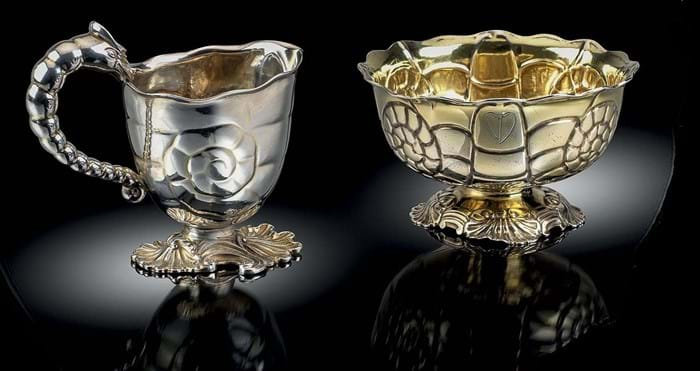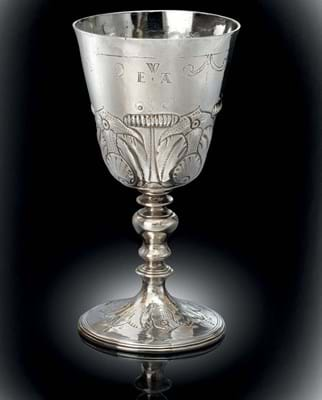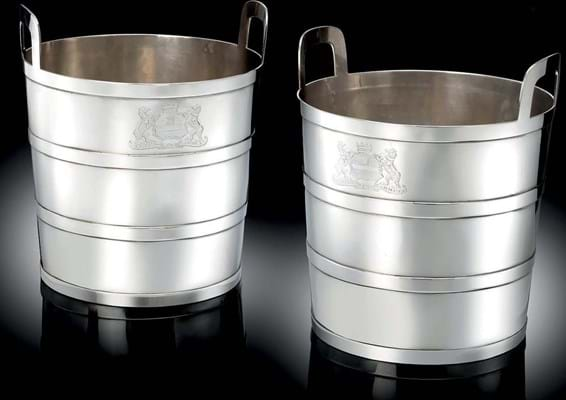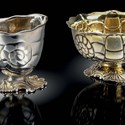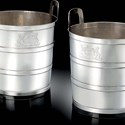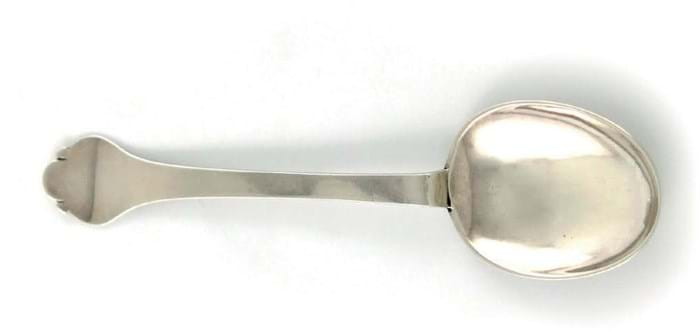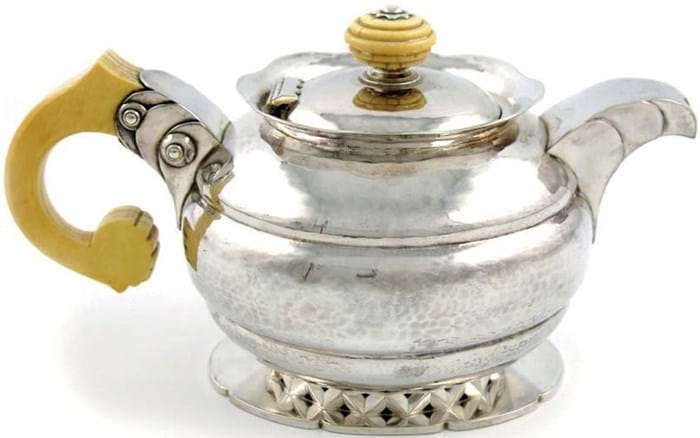There were, of course, some outstanding pieces at the April 24-25 auction, most notably the pair of London 1685 candlesticks illustrated in ATG No 2340. A sophisticated model in excellent condition, they bore the mark TD, probably for Thomas Dynock, and were engraved with an armorial combining Essex and Norfolk families.
Estimated at £10,000-15000, the pair went to leading London dealers SJ Phillips at £62,000.
But an instructive statistic is that of the 90% of the 877 lots which sold, more than 75% did so in three figures. Some were among the specialist collecting areas including wine labels and apple corers featured on these pages.
Queen Anne spoons all sold
A private collection of Queen Anne spoons, mainly dognose, totalled £38,000 with every one of the 38 lots selling.
Prices ranged from £200 for a c.1705, 8in (20cm) long dessert spoon, inscribed Prince of Wales’s Coffee House by Isaac Davenport, London, to £2200 for a rare Scottish dessert spoon made by David Dunlop of the Canongate (Edinburgh) c.1703.
A few of the spoons on offer had been bought at Sotheby’s in November 2005 including the Salisbury best-seller: a Henry VIII (London 1534) apostle spoon with a basket-shaped master-maker’s device. It took a hammer £2000 at Sotheby’s. but at Salisbury went to the London trade at £7400.
Other comparisons were less encouraging for vendors – including a slip-top by Martin Hewitt, London 1614. Bought at Sotheby’s for £1980, it took £2200 (against a £700-900 estimate) at W&W.
A spoon from another vendor was a reminder that the sorority of silversmiths comprises more than Hester Bateman.
One was Elizabeth Hazelwood of Norwich, whose c.1684-88, 8in (20.5cm) trefid spoon made £5200 against a £1300-1800 estimate.
Another was Elizabeth Godfrey, whose London 1751, 4½in (11.5cm) diameter, silver-gilt sugar bowl with snail decoration was offered with an unmarked George II cream jug formed as a snail’s shell. Both engraved with a crest with a provenance to the Earl of Chichester, they were estimated at £700-900 but went to a collector at £9500.
Bateman was represented by a 1782 oval teapot and matching caddy, with bright-cut decoration, domed covers and engraved monograms. Weighing 32oz in all, they doubled the mid-estimate at £3300.
Victorian, and some later Georgian, teapots could be had for the usual three-figure sums but the outstanding example was by HG Murphy (1884-1939), founder of the Falcon Studio.
At Salisbury his 1930 take on Art Deco was estimated at £1500-2000 and sold to a collector at £6800.
Prolific Paul Storr
Almost inevitably, the prolific Paul Storr had an entry in the teapot stakes – an 1822 circular example with drape decoration, leaf-capped spout and flower finial which took a lower-estimate £1500.
The great London smith was better represented by a pair of 8¾in (22cm) high, London 1795 wine coolers. Of tapering bucket form with loop handles and loop bands, and engraved with the arms of Baring, the 79oz pair was estimated at £10,000-15,000.
In December 2007, the pair sold below estimate at £14,900 at Sotheby’s. Even then, the conspicuous consumption of the boom years was fading and today silver wine coolers are no longer must-have tableware for the monied classes.
W&W was looking for £10,000-15,000 for the coolers, which went to a collector on the lower figure.
A Storr work to go comfortably above estimate was a London 1818 circular seal case, 7in (18cm) diameter, with the Royal Arms within an oak-leaf border. At Sotheby’s in November 2005 it had sold at £6000. Given a £1500-2000 estimate at W&W, it sold to the London trade at £5200.
What applies to wine coolers also goes for large showy centerpieces, such as an Elkington figural model which failed at £30,000-40,000, and a 55oz monteith by Robert Cooper, London 1701.
Chased with vacant scroll cartouches on a matted ground, stylised foliate decoration, and a detachable castellated collar featuring masks and scrolls, it was another piece bought at Sotheby’s in 2005 when it took £13,000. At Salisbury it sold around estimate at £12,000 to an overseas dealer.
Charles I quality cup
Wine cups are a rarefied field for specialists – at least those of the quality of a Charles I example at W&W. With a maker’s mark attributed to Barnabus Gregory, London 1630, the 5in (13cm), 4oz vessel was in W&W’s memorable How of Edinburgh silver sale in October 2007.
On that heady occasion, it made a five-times-estimate £20,000. This time around it was estimated at £7000-9000 and sold to the London trade at £12,200.
Provincial drinking vessels included a (20cm) tall, 22oz baluster-form beer jug by James Kirkup, Newcastle 1751. With a scroll handle and engraved with an armorial, it doubled the mid-estimate at £4100.
With new collectors coming in, the base of the pyramid of the silver market appears to be sound, but there were a couple of casualities among the later projected stars at Salisbury.
However, a silver-gilt and mother-of-pearl dessert cutlery service of knives, forks and spoons for 30 by Robert Linzeler, Paris c.1910 doubled top hopes. Here there was more than the name of the smith to consider. Commissioned for Lord Kitchener, each piece was inset with a K below a viscount’s coronet (before Kitchener was elevated to an earl in 1914). In a fitted box, the service went to a private buyer at £16,000.


